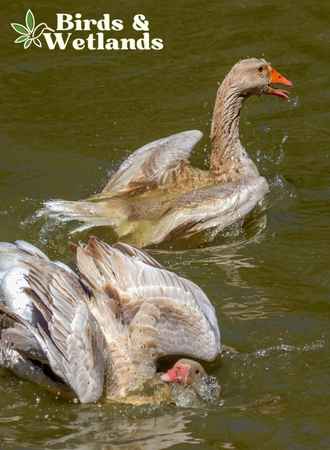What comes to mind when you think of housing for geese? Most people envision an imposing structure with a large open space inside for the geese to live in. While this type of housing can be effective, other options may be better suited to your needs.
In this post, we’ll look at some of the different types of waterfowl housing and discuss the benefits and drawbacks of each. We’ll also give you pointers and ideas on how to build the best goose or duck house for your needs. We hope this post will help you raise your geese right away.
Key Points
Unlike chickens, geese do not need a waterfowl coop. They are content to rest in a quiet corner.
Geese lay eggs on the ground but they will happily use nesting boxes if available.
Duck coops can house both ducks and geese, but you’ll need more room for the larger geese.
Chickens and geese can be housed together, but they have different space requirements.
Do geese need a goose house?
While most geese roost on the ground, some breeds will use a goose house if available. Goose houses provide geese with a safe, dry place to rest and escape inclement weather. They can also help deter predators because geese are more likely to notice them approaching if they are higher.
On the other hand, goose houses aren’t necessary for waterfowl comfort, and many breeders don’t bother with them. Geese will be content if they have access to a safe, quiet resting place.
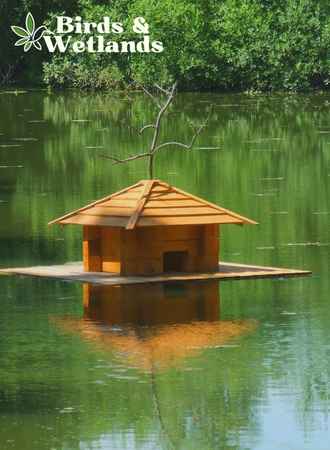
Do geese require nesting boxes?
Ground-nesting birds, such as ducks and geese, lay their eggs on the ground, pulling bedding, feathers and leaves around themselves, selecting areas to hide and protect their eggs and building their nest in the wild.
They also carefully choose locations for their nest that offer privacy and protection from predators. As long as you provide a safe place for your ducks and geese to nest in the spring, they will be content to do without a nesting box.
But if you decide to provide a nesting box, make sure it is covered in wire mesh so that only one bird could sit.
Can geese be housed with ducks?
Ducks and geese are both social animals who enjoy being around other members of their species, which is why they can coexist in a duck coop.
Geese are larger and more aggressive than ducks, but if introduced to the ducks at a young age, they should get along just fine. It’s critical to have enough space for all birds to coexist peacefully, so your coop has more room for your geese.
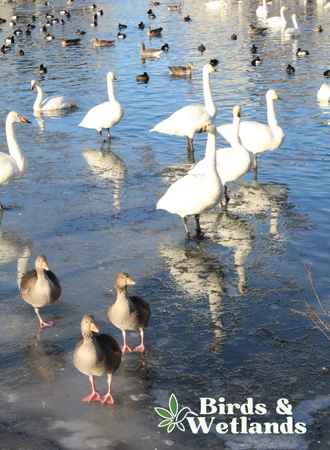
Can geese be housed in a chicken coop?
While chickens and geese are both poultry, there are some important differences to consider before housing them together. Because chickens are much smaller than geese, they can easily fit inside a coop designed specifically for them.
Geese tend to be significantly larger and may not fit inside a chicken coop. Furthermore, chickens prefer to sleep in trees or on high perches, whereas geese prefer to sleep on the ground. As a result, if you decide to house your geese with your chickens, you will need to provide a separate sleeping area for them.
Finally, remember that more than one goose can be aggressive towards chickens so it’s better to introduce one goose to your chickens.
How much space do geese need?
If have already decided to keep geese in your yard or small farm, know that these birds are social creatures that thrive in pairs or small groups. They are, however, very active birds that require a lot of space to roam.
The recommended space requirement for geese is 6 to 8 square feet per bird. This means that a pair of geese would require at least 12 to 16 square feet of space to be happy. Some people recommend providing at least one square metre per goose.
A small low shed would be adequate, safe housing with adequate ventilation to keep the inside from becoming too hot. Moreover, geese are active both during the day and at night.
As a result, they require a safe and secure roosting location. It would be ideal to have a larger run or shed with a cool water source so that your birds can drink after they eat.
Geese are also very sensitive to temperature changes, so their housing should be in a sheltered location where they will be protected from the wind and rain.
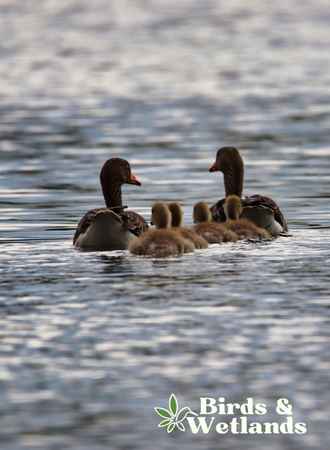
Do you need a quarantine space for the new geese?
A goose is a significant investment. Geese require not only a lot of shelter space, but they also need to be able to socialize with other geese. As a result, ensure you have the proper facilities before adding any new feathered friends to your flock.
One of the most critical considerations is whether or not you have a suitable quarantine space. It’s important to keep new geese separate from your existing flock for at least 30 days if you’re bringing them in.
This will help keep any potential diseases from spreading to your other birds. You must also ensure that your quarantine area is large enough to allow the new birds to stretch their wings. Setting up a proper quarantine space may appear to be a hassle, but it is an important part of responsible goose ownership.
How to predator-proof your geese from predators?
Many people think of geese as flock defenders, in a way they are due to their aggressiveness. However, what many people don’t realize is that geese are also vulnerable to predation.
With this in mind, you will need to take some precautions if you are planning on keeping geese in your backyard.
Do not let your geese sleep outside in the pond or pool.
One of the most important protection you can provide your geese is an indoor living space to keep them safe from the ground and aerial predators while they rest at night. This could be a barn, shed, or even a garage if large enough.
The space should have solid walls, a roof to keep predators out, and a door that can be securely locked. You must also ensure that the area is well-ventilated to avoid the accumulation of harmful gases.
Outside, create a large enough enclosure to give your geese plenty of space to roam during the day. To deter digging predators, the fence should be at least 6 feet high and buried several inches underground. For added security, consider installing an electric fence around the perimeter.
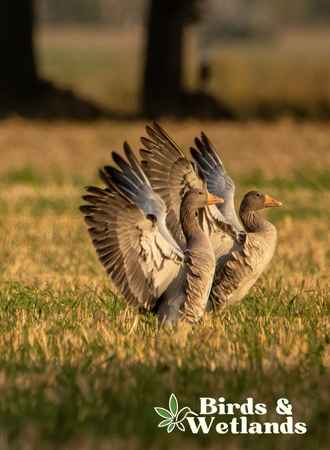
What is the best bedding material for waterfowl?
When it comes to waterfowl bedding material, there are several options to consider. Popular materials include straw bales, pine shavings, ground corn cobs, and rice hulls. Each has advantages and disadvantages, so selecting the right bedding material for your specific needs is critical.
Straw bales are a good choice if you want something that will last a long time. However, they are difficult to clean and may offer less insulation than other options.
Pine shavings are another popular bedding option because they are both easy to find and inexpensive. However, they can be messy and attract rodents such as rats.
Ground corn cobs and rice hulls are absorbent and reasonably priced, but they can be difficult to come by in some areas.
When choosing the bedding for your waterfowl, pick the one that fits your waterfowl’s needs. For instance, waterfowl make a lot of mess so if you don’t want to spend much time cleaning, you may opt for something easy to clean.
What is the difference between a waterfowl coop and a chicken coop?
Waterfowl housing can be very similar to chicken housing, but there are a few key differences to consider. The main difference is that ducks and geese do not require roosts. Most domestic breeds of ducks and geese have limited flight capabilities and will largely ignore a perch if one is provided.
Furthermore, waterfowl are more resistant to damp conditions than chickens, so their housing does not need to be as dry. However, their housing and living space require frequent cleaning because they produce more waste than chickens.
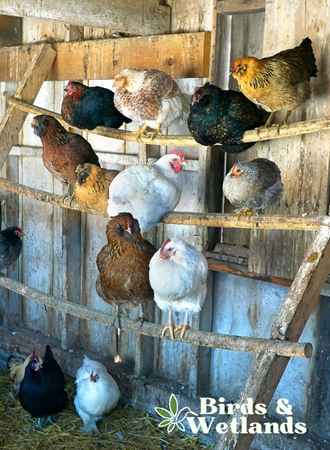
What kind of floor do geese need?
Flooring is essential to any living space, serving both functional and aesthetic purposes. A few different flooring options are commonly used in waterfowl living spaces.
Concrete is a popular material for a variety of reasons. It is long-lasting and simple to clean, making it ideal for high-traffic areas. Concrete can also be stained or painted to achieve any desired look.
Another popular material for goose living quarters is wood. It’s welcoming because it’s warm and natural. Wood flooring is also relatively simple to maintain, though it may occasionally require refinishing.
Dirt is frequently used in outdoor goose living spaces like pens or coops. It is inexpensive and simple to maintain, and geese prefer it over other options.
What are the most popular domestic breeds of geese?
If you’re planning on raising geese, here are some of the most popular breeds:
Sebastopol
Tufted Roman
Chinese
American Buff
Pilgrim
Toulouse Geese
African Geese
American Saddleback
Pomeranian Goose
Cotton Patch Goose
